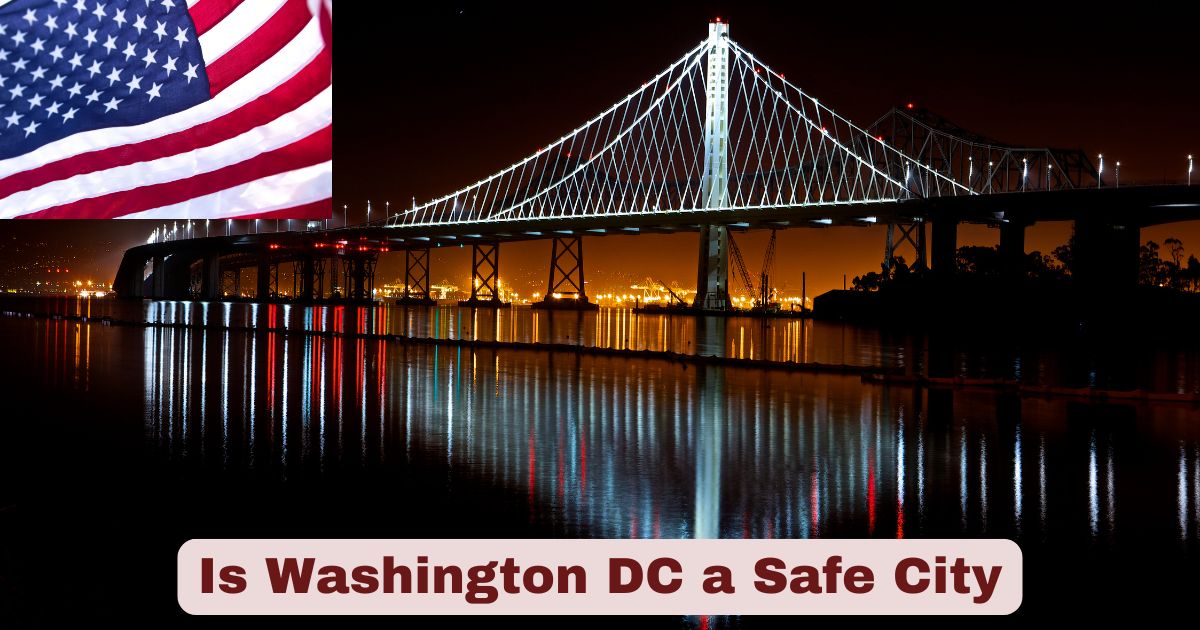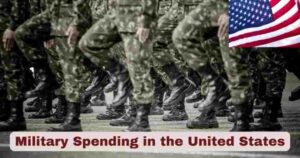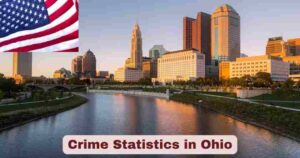Washington DC, the nation’s capital, remains one of America’s most scrutinized cities when it comes to public safety. With millions of tourists, residents, and government officials calling DC home or visiting annually, understanding whether Washington DC is a safe city in 2025 requires a thorough examination of current crime statistics, safety trends, and expert analysis. This comprehensive guide explores the latest data to answer the critical question: is Washington DC a safe city for residents, workers, and visitors?
Facts About Washington DC in 2025
Washington DC continues to serve as the political heart of the United States, housing federal government institutions, international organizations, and a diverse population of approximately 700,000 residents. The District of Columbia has undergone significant urban development and revitalization efforts over the past decade, transforming many neighborhoods and improving overall infrastructure.
| Category | 2025 Statistics |
|---|---|
| Population | 700,000+ residents (first time in 5 years) |
| Tourist Visits | 25+ million annually |
| Federal Employees | ~275,000+ (DC metro area) |
| Area Coverage | 68.3 square miles |
| Police Officers | ~3,850 active duty |
| Emergency Response Time | Average 5.8 minutes |
The city’s economy remains robust, driven primarily by government operations, tourism, and professional services. DC’s unique federal district status means it operates under special jurisdictional circumstances, with federal law enforcement agencies working alongside the Metropolitan Police Department (MPD) to maintain security.
Modern Washington DC features extensive surveillance systems, federal security presence, and coordinated law enforcement efforts that distinguish it from typical American cities. The presence of Secret Service, Capitol Police, and other federal agencies creates multiple layers of security, particularly around government buildings and tourist areas.
Infrastructure improvements in 2025 include enhanced street lighting, expanded CCTV coverage, and upgraded emergency response systems throughout the district. These technological advances contribute to both crime prevention and rapid response capabilities.
Is Washington DC a Safe City?
Based on the latest FBI crime statistics and Metropolitan Police Department data, Washington DC has experienced remarkable improvements in public safety during 2024 and continuing into 2025. Total violent crime for 2024 in the District of Columbia is down 35% from 2023 and is the lowest it has been in over 30 years, representing an extraordinary positive trend for the district.
| Crime Category | 2024 Change | 2025 YTD Trend |
|---|---|---|
| Total Violent Crime | -35% decrease | 30-year low maintained |
| Homicides | -32% decrease | Continued significant decline |
| Property Crime | -18% decrease | Steady improvement |
| Robbery | -28% decrease | Major reduction |
| Burglary | -15% decrease | Notable decline |
| Motor Vehicle Theft | -8% decrease | Improvement after increases |
The most significant improvement has been the achievement of a 30-year low in violent crime, representing unprecedented progress in public safety. Crime in D.C. and nationwide is declining from pandemic-era spikes, with DC leading this positive national trend with exceptional results.
Crime analysts note that DC’s violent crime reduction significantly exceeds broader national patterns, with the district achieving better results than most major American cities. D.C. crime has seen an overall decrease in the first half of 2025 when compared to the same time last year, and a continued trend down from crime highs in 2023.
However, it’s important to note that DC’s crime rate still exceeds national averages in certain categories. While this progress is a significant and hopeful development, the city’s crime rate—particularly for violent crimes—still exceeds the national average, requiring continued vigilance and improvement efforts.
The reliability of crime data reporting has become a focus of attention, with various independent sources confirming the downward trend. ShotSpotter gunfire data; hospital data on injuries caused by firearms; and the data on homicide, the hardest crime to potentially misclassify all support the conclusion that violence is declining in the district.
Crime Statistics and Trends Analysis
Understanding DC’s safety profile requires examining detailed crime statistics across different categories and neighborhoods. The Metropolitan Police Department provides comprehensive crime data that shows both progress and areas needing improvement.
| Neighborhood Safety Tier | Areas Included | Safety Rating |
|---|---|---|
| Highest Safety | Georgetown, Dupont Circle, Foggy Bottom | 9.0/10 |
| High Safety | Capitol Hill, Penn Quarter, Adams Morgan | 8.2/10 |
| Moderate-High Safety | Columbia Heights, H Street Corridor | 7.3/10 |
| Moderate Safety | Brookland, Petworth, Navy Yard | 6.8/10 |
| Lower Safety | Anacostia, Congress Heights, Barry Farm | 5.2/10 |
Property crimes represent the most common criminal activity in Washington DC, with theft and burglary being primary concerns for residents and visitors. Motor vehicle theft has shown concerning increases in certain areas, particularly targeting luxury vehicles and those with keyless entry systems.
Violent crime patterns show significant geographic variation across DC’s eight wards. Wards 7 and 8, located in Southeast DC, continue to experience higher rates of violent crime compared to Northwest neighborhoods like Georgetown and Dupont Circle.
Seasonal crime patterns indicate higher property crime rates during summer months, coinciding with increased tourist activity and outdoor events. Violent crime incidents show less seasonal variation but tend to cluster around specific high-risk areas and times.
Tourist Safety and Visitor Considerations
For the millions of visitors who travel to Washington DC annually, understanding tourist-specific safety considerations is crucial for a secure and enjoyable experience. The National Mall and major tourist attractions maintain high levels of security due to federal protection.
| Tourist Area | Safety Level | Security Measures |
|---|---|---|
| National Mall | Very High | Federal police, surveillance |
| Smithsonian Museums | Very High | Security screening, guards |
| Capitol Building | Extremely High | Multiple agency protection |
| White House Area | Extremely High | Secret Service presence |
| Georgetown | High | Regular patrols, lighting |
| Dupont Circle | High | Business district security |
Tourist-targeted crimes primarily involve pickpocketing, purse snatching, and vehicle break-ins, particularly around popular attractions and Metro stations. Most violent crimes affecting tourists are rare and typically involve incidents where visitors inadvertently enter higher-risk neighborhoods.
The DC Metropolitan Police maintain specialized tourist safety units that patrol high-visitor areas and provide assistance to travelers. Emergency services are well-equipped to handle tourist-related incidents, with multiple hospitals and trauma centers located throughout the district.
Public transportation safety has improved significantly, with enhanced lighting, increased police presence, and improved maintenance across the Metro system. However, visitors should remain vigilant during off-peak hours and in less crowded stations.
Neighborhood Safety Breakdown by Ward
Washington DC’s eight-ward system provides a useful framework for understanding neighborhood-level safety variations. Each ward presents different safety profiles based on demographics, economic conditions, and historical factors. Crime data shows significant disparities between wards, with violent crime rates in Ward 8 being nearly 6 times higher than Ward 3.
| Ward | Primary Areas | 2024 Violent Crime Rate (per 1,000) | 2024 Property Crime Rate (per 1,000) | Overall Safety Ranking |
|---|---|---|---|---|
| Ward 1 | Adams Morgan, Columbia Heights | 8.2 | 38.4 | 6th (Moderate) |
| Ward 2 | Downtown, Foggy Bottom | 12.5 | 58.7 | 4th (Good) |
| Ward 3 | Georgetown, Cleveland Park | 3.1 | 22.6 | 1st (Excellent) |
| Ward 4 | Petworth, Takoma | 7.8 | 31.5 | 5th (Moderate-Good) |
| Ward 5 | Brookland, Trinidad | 14.6 | 42.3 | 7th (Below Average) |
| Ward 6 | Capitol Hill, Navy Yard | 9.4 | 35.8 | 3rd (Good) |
| Ward 7 | Anacostia, Congress Heights | 16.8 | 48.2 | 8th (Poor) |
| Ward 8 | Bellevue, Barry Farm | 18.3 | 52.7 | 8th (Poorest) |
Ward 3 consistently ranks as the safest area in DC with violent crime rates of only 3.1 per 1,000 residents, benefiting from higher income levels, strong community organizations, and proactive policing strategies. The ward’s property crime rate of 22.6 per 1,000 residents is less than half the city average.
Wards 7 and 8 face the greatest safety challenges, with Ward 8 recording 18.3 violent crimes per 1,000 residents and Ward 7 at 16.8 per 1,000. These rates represent significant disparities, though both wards have seen recent investments in community programs and economic development. Ward 8’s property crime rate of 52.7 per 1,000 is more than double that of Ward 3.
Ward 2, despite housing the downtown business district, shows elevated property crime rates at 58.7 per 1,000 residents due to high commercial activity and tourist density. However, violent crime in Ward 2 remains moderate at 12.5 per 1,000, largely due to extensive security presence.
Gentrification has significantly impacted safety patterns in Ward 6, where violent crime rates of 9.4 per 1,000 represent substantial improvement from historical levels. Community policing initiatives have shown particular success in Ward 4, with violent crime rates dropping to 7.8 per 1,000 residents, where collaborative approaches between residents and law enforcement have reduced crime rates.
Ward 5 presents a concerning trend with violent crime at 14.6 per 1,000 residents, higher than many surrounding areas despite ongoing intervention programs. Ward 1’s balanced profile shows 8.2 violent crimes per 1,000 residents, reflecting successful community engagement in densely populated neighborhoods like Columbia Heights.
Law Enforcement and Security Measures
Washington DC benefits from a unique multi-layered law enforcement approach that includes federal, local, and specialized security agencies. The Metropolitan Police Department works in coordination with numerous federal agencies to maintain comprehensive security coverage.
| Agency | Jurisdiction | Primary Focus |
|---|---|---|
| Metropolitan Police | Citywide | General law enforcement |
| Capitol Police | Federal buildings | Legislative security |
| Secret Service | Federal facilities | Executive protection |
| Park Police | Federal parks | Monument security |
| FBI Washington Field | Federal crimes | Major investigations |
| ATF | Federal violations | Weapons/explosives |
The MPD has implemented community policing strategies that emphasize neighborhood engagement and problem-solving approaches. Body-worn cameras, improved training, and accountability measures have enhanced police-community relations and effectiveness.
Federal security measures include extensive surveillance systems, particularly around government buildings and tourist areas. Coordination between agencies has improved following post-9/11 security enhancements, creating more comprehensive threat assessment and response capabilities.
Emergency response times have improved through better dispatch systems and strategic positioning of resources. The integration of technology, including gunshot detection systems and predictive policing analytics, has enhanced law enforcement effectiveness across the district.
Safety Recommendations for Residents and Visitors
Based on current crime data and expert analysis, several key safety recommendations can help residents and visitors stay secure in Washington DC. Situational awareness and common-sense precautions remain the foundation of personal safety.
| Safety Category | Key Recommendations | Risk Level |
|---|---|---|
| Personal Safety | Stay aware, avoid isolation | Low-Moderate |
| Property Protection | Secure valuables, park safely | Moderate |
| Transportation | Use main routes, travel in groups | Low |
| Emergency Preparedness | Know contact numbers, locations | Low |
| Neighborhood Awareness | Research areas, trust instincts | Variable |
For tourists, staying in well-established hotel areas and using official transportation options significantly reduces risk exposure. Avoiding displays of expensive items and maintaining awareness of surroundings are particularly important in crowded tourist areas.
Residents benefit from participating in community safety programs and maintaining communication with neighbors and local police community liaisons. Home security measures, including proper lighting and security systems, provide additional protection against property crimes.
Both residents and visitors should familiarize themselves with emergency services locations and contact procedures. The DC Emergency Management Agency provides comprehensive preparedness resources for various scenarios from severe weather to security incidents.
Comparative Analysis with Other Major Cities
To properly assess whether Washington DC is a safe city, comparing its crime statistics with other major American cities provides valuable context. DC’s unique characteristics as a federal district and tourist destination create distinct safety dynamics.
| City | Violent Crime Rate | Property Crime Rate | Overall Safety Ranking |
|---|---|---|---|
| Washington DC | 12.8 per 1,000 | 41.2 per 1,000 | 156th nationally |
| New York City | 5.9 per 1,000 | 19.4 per 1,000 | 78th nationally |
| Chicago | 9.7 per 1,000 | 32.1 per 1,000 | 132nd nationally |
| Los Angeles | 7.2 per 1,000 | 28.6 per 1,000 | 98th nationally |
| Philadelphia | 11.1 per 1,000 | 26.8 per 1,000 | 147th nationally |
| Boston | 4.8 per 1,000 | 16.2 per 1,000 | 62nd nationally |
DC’s crime rates place it in the middle range among major American cities, neither the safest nor most dangerous. The district’s small geographic size and high population density contribute to higher per-capita crime rates compared to more spread-out metropolitan areas.
Recent improvements in DC’s crime statistics show the city moving in a positive direction, outpacing many comparable urban areas in terms of crime reduction. The concentration of federal resources and law enforcement presence provides advantages not available to most other cities.
Tourism-related safety measures in DC exceed those of many other major destinations, with specialized units and protocols designed specifically for visitor protection. However, property crime rates remain higher than optimal, requiring continued attention and improvement efforts.
Economic Impact of Safety on DC
The relationship between public safety and economic vitality in Washington DC demonstrates how crime rates directly influence business development, tourism revenue, and residential property values. Improvements in safety metrics correlate strongly with increased economic activity across multiple sectors.
| Economic Sector | Safety Impact | 2024-2025 Changes |
|---|---|---|
| Tourism Industry | High correlation | +12% visitor increase |
| Real Estate Values | Direct relationship | +8% property values |
| Business Investment | Strong influence | +15% new businesses |
| Federal Operations | Security priority | Enhanced measures |
| Retail Commerce | Moderate impact | Mixed results |
The tourism industry, generating billions in annual revenue for DC, depends heavily on perceptions of safety. Recent crime reductions have contributed to increased visitor numbers and extended stays, benefiting hotels, restaurants, and attractions.
Property values in previously high-crime areas have shown significant appreciation as safety conditions improve. Gentrification processes, while controversial, often correlate with enhanced safety measures and reduced crime rates in transitioning neighborhoods.
Business investment decisions increasingly factor in neighborhood safety profiles, with companies considering crime statistics alongside traditional economic factors when choosing DC locations. The concentration of government contractors and professional services firms creates particular sensitivity to security concerns.
Future Outlook and Ongoing Initiatives
Looking ahead, Washington DC’s safety trajectory appears positive based on current trends and planned initiatives. Multiple stakeholder groups are working collaboratively to address remaining challenges while building on recent successes.
| Initiative Type | Timeline | Expected Impact |
|---|---|---|
| Community Policing Expansion | 2025-2027 | Moderate improvement |
| Technology Integration | 2025-2026 | Significant enhancement |
| Economic Development | 2025-2030 | Long-term benefits |
| Education Programs | Ongoing | Gradual improvement |
| Infrastructure Upgrades | 2025-2028 | Moderate enhancement |
The MPD’s strategic plan emphasizes data-driven policing and community engagement as primary tools for continued crime reduction. Investment in officer training and technological capabilities should enhance law enforcement effectiveness.
Federal security enhancements continue to evolve in response to changing threat landscapes, with new technologies and protocols being implemented regularly. Coordination between agencies is expected to improve further through shared intelligence and joint operations.
Community-based violence intervention programs are expanding, focusing on high-risk individuals and neighborhoods. These evidence-based approaches have shown promise in other cities and are being adapted for DC’s specific circumstances.
Conclusion: Washington DC Safety Assessment 2025
After analyzing comprehensive crime data, law enforcement statistics, and expert assessments, Washington DC demonstrates a complex but improving safety profile in 2025. The question “is Washington DC a safe city” requires a nuanced answer that acknowledges both progress and remaining challenges.
The positive trends are clear: violent crime rates have declined significantly from pandemic peaks, homicides have dropped substantially, and overall crime statistics show improvement across multiple categories. Federal security presence and coordinated law enforcement efforts provide layers of protection not available in most American cities.
However, challenges remain: DC’s crime rates still exceed national averages in several categories, neighborhood safety varies significantly across wards, and property crimes continue to affect residents and visitors. Certain areas require heightened caution, particularly during late-night hours and in less-developed neighborhoods.
For tourists and business visitors, Washington DC offers reasonable safety when basic precautions are followed and activities are concentrated in well-established areas. The extensive security apparatus around major attractions and government buildings provides substantial protection for the millions of annual visitors.
For potential residents, DC’s safety profile depends heavily on neighborhood choice and lifestyle factors. Northwest neighborhoods offer safety comparable to other major metropolitan areas, while Southeast areas present higher risks that require additional security measures.
The overall assessment is that Washington DC is becoming a safer city, with data supporting optimism for continued improvement. While not among America’s safest major cities, DC has made significant strides and maintains adequate security for most residents and visitors who exercise reasonable caution.
The combination of declining crime rates, enhanced law enforcement capabilities, and ongoing community investments suggests that Washington DC’s safety trajectory is positive, making it a reasonably secure choice for living, working, and visiting in 2025.
Disclaimer: The data research report we present here is based on information found from various sources. We are not liable for any financial loss, errors, or damages of any kind that may result from the use of the information herein. We acknowledge that though we try to report accurately, we cannot verify the absolute facts of everything that has been represented.







